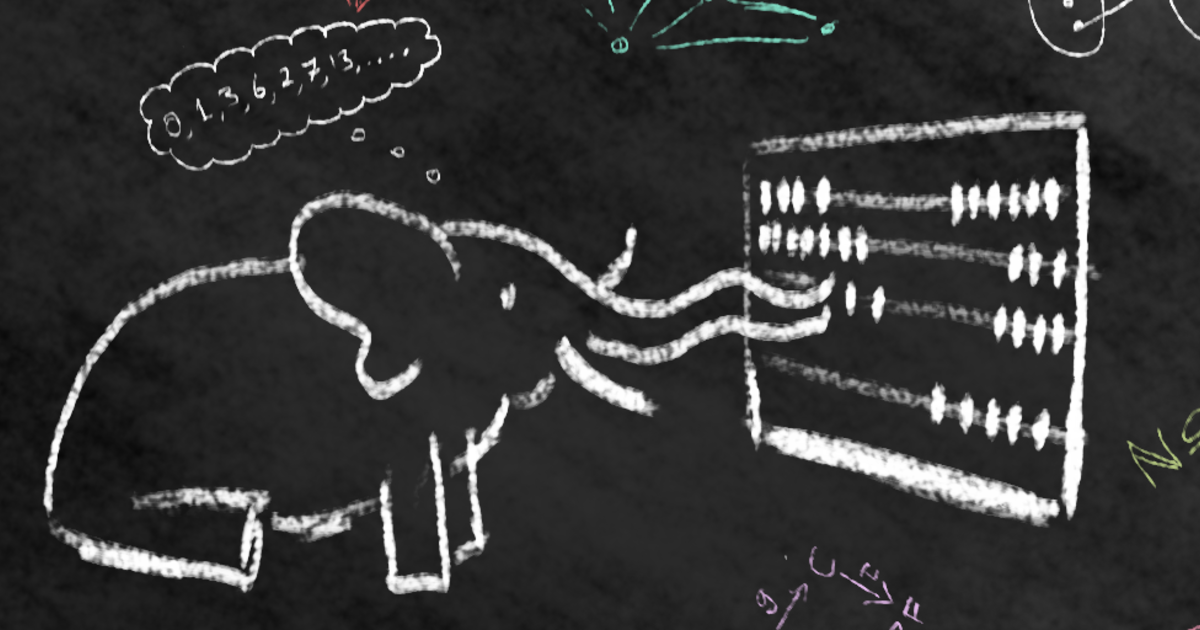Jocelyn<p><span class="h-card" translate="no"><a href="https://mastodon.social/@Thales_Curiosities" class="u-url mention" rel="nofollow noopener noreferrer" target="_blank">@<span>Thales_Curiosities</span></a></span> <span class="h-card" translate="no"><a href="https://mathstodon.xyz/@tao" class="u-url mention" rel="nofollow noopener noreferrer" target="_blank">@<span>tao</span></a></span> </p><p>Not just maths… The text of <a href="https://mastodon.gougere.fr/tags/RaymondQueneau" class="mention hashtag" rel="nofollow noopener noreferrer" target="_blank">#<span>RaymondQueneau</span></a>'s 1947 "Exercices de style" (translated as Exercises in Style), which showcases different writing constraints among which the <a href="https://mastodon.gougere.fr/tags/lipogram" class="mention hashtag" rel="nofollow noopener noreferrer" target="_blank">#<span>lipogram</span></a> (text avoiding strictly the usage of one or more letters of the alphabet) …has an *e* right in the middle of its lipogram in e.</p><p>So, should the English translation have one too? Is there an implied warranty that a text that claims to be a lipogram is one? Of course, we expect that a (...)</p>
Recent searches
No recent searches
Search options
Only available when logged in.
mathstodon.xyz is one of the many independent Mastodon servers you can use to participate in the fediverse.

A Mastodon instance for maths people. We have LaTeX rendering in the web interface!
Administered by:
Server stats:
2.8Kactive users
mathstodon.xyz: About · Status · Profiles directory · Privacy policy
Mastodon: About · Get the app · Keyboard shortcuts · View source code · v4.3.7
#lipogram
0 posts · 0 participants · 0 posts today
Matthew Muñoz :bon:<p>Shelley’s Ozymandias with no “e”.</p><p>(A Void by Georges Perec trans. Gilbert Adair.)</p><p><a href="https://m.knucklebones.rip/tags/poetry" class="mention hashtag" rel="nofollow noopener noreferrer" target="_blank">#<span>poetry</span></a> <a href="https://m.knucklebones.rip/tags/sonnet" class="mention hashtag" rel="nofollow noopener noreferrer" target="_blank">#<span>sonnet</span></a> <a href="https://m.knucklebones.rip/tags/lipogram" class="mention hashtag" rel="nofollow noopener noreferrer" target="_blank">#<span>lipogram</span></a></p>
Blake Eskin<p><span class="h-card"><a href="https://saturation.social/@irwin" class="u-url mention" rel="nofollow noopener noreferrer" target="_blank">@<span>irwin</span></a></span> fails the <a href="https://saturation.social/tags/lipogram" class="mention hashtag" rel="nofollow noopener noreferrer" target="_blank">#<span>lipogram</span></a> test 👎 <a href="https://saturation.social/tags/oulipo" class="mention hashtag" rel="nofollow noopener noreferrer" target="_blank">#<span>oulipo</span></a> <a href="https://saturation.social/tags/chatbots" class="mention hashtag" rel="nofollow noopener noreferrer" target="_blank">#<span>chatbots</span></a></p>
Matthew Muñoz<p>This sonnet brought to you by the letter E</p><p><a href="https://vis.social/tags/univocal" class="mention hashtag" rel="nofollow noopener noreferrer" target="_blank">#<span>univocal</span></a> <a href="https://vis.social/tags/sonnet" class="mention hashtag" rel="nofollow noopener noreferrer" target="_blank">#<span>sonnet</span></a><br><a href="https://vis.social/tags/poetry" class="mention hashtag" rel="nofollow noopener noreferrer" target="_blank">#<span>poetry</span></a> <a href="https://vis.social/tags/poem" class="mention hashtag" rel="nofollow noopener noreferrer" target="_blank">#<span>poem</span></a><br><a href="https://vis.social/tags/lipogram" class="mention hashtag" rel="nofollow noopener noreferrer" target="_blank">#<span>lipogram</span></a><br><a href="https://vis.social/tags/versethursday" class="mention hashtag" rel="nofollow noopener noreferrer" target="_blank">#<span>versethursday</span></a></p>
Sasha Dumas (dab)<p><span class="h-card"><a href="https://oulipo.social/@rjl20" class="u-url mention" rel="nofollow noopener noreferrer" target="_blank">@<span>rjl20</span></a></span> Don't b sad that that awful glyph had slipp'd thru, d'you know that RaymondQ (not <span class="h-card"><a href="https://oulipo.social/@RaymondQ" class="u-url mention" rel="nofollow noopener noreferrer" target="_blank">@<span>RaymondQ</span></a></span>, but a grand inspirator) has such a glyph right in midst of his <a href="https://oulipo.social/tags/lipogram" class="mention hashtag" rel="nofollow noopener noreferrer" target="_blank">#<span>lipogram</span></a> in his "Stylistic Drill"? I wouldn't think that, but it's a fact!</p>
SearchLive feeds
Mastodon is the best way to keep up with what's happening.
Follow anyone across the fediverse and see it all in chronological order. No algorithms, ads, or clickbait in sight.
Create accountLoginDrag & drop to upload
